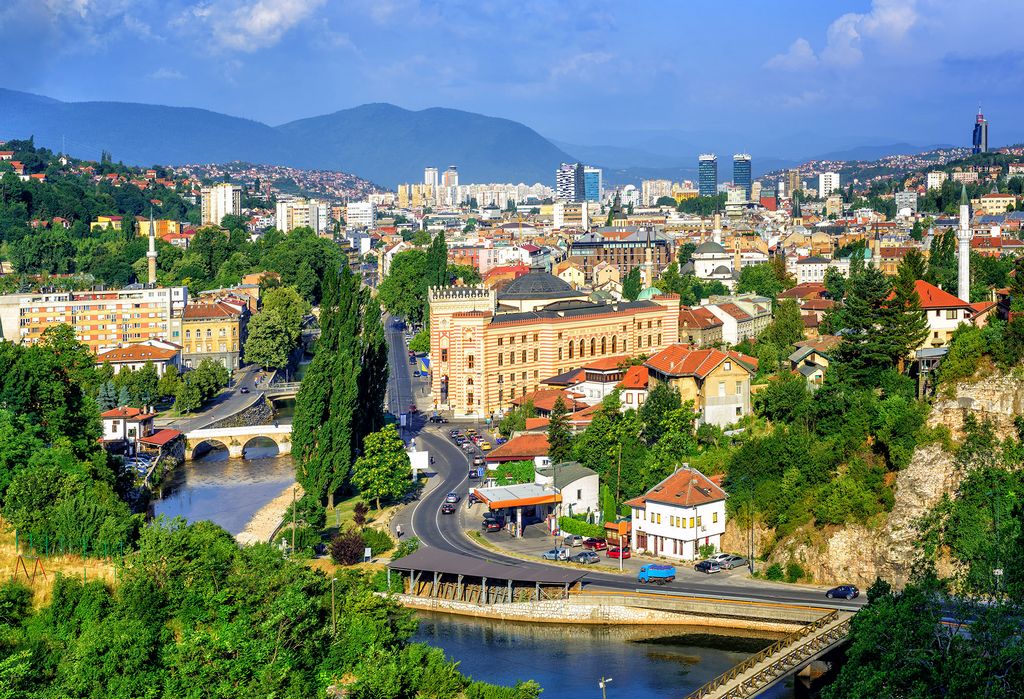The most effective travel ideas for Sarajevo
Казковий світ азарту з неймовірними можливостями чекає на тебе, а gorilla принесе хвилю емоцій та ви
8 julio, 2025Неперевершені можливості для розваг та виграшів криються у gorilla ua.
8 julio, 2025Baffled, I turn around. Had not I just been going through the spruced-up Ferhadija buying street, with its Austrian-style coffee homes and Western style chains? And now, with every action, I seem like I’m diving right into a various cosmos.
The mart has actually dominated the old town because Ottoman policy. The wonderful smell of shisha tobacco loads the air, steaming coffee is brought past me on elaborate copper trays, and the muezzin calls for prayer. Nearly every profession still fits in the network of alleys and yards.
At the threshold between the town hall and the old town, two globes satisfy, however this is absolutely nothing unusual in the funding of Bosnia-Herzegovina (www.sarajevo.travel ), because below cultures and religions, periods and building designs along with battle and tranquility fulfill on practically every edge.
What to see in Sarajevo
In the old town district alone, 4 religious beliefs are represented with places of worship – one-of-a-kind in Europe. The Roman Catholic Sacred Heart Sanctuary stands at the entry gate. The heart of Bascarsija is the Gazi Husrev-Beg Mosque, whose namesake is laid to rest in a small mausoleum next door (Sarači).
To today, he is thought about the father of the city, having actually formed it via cultural visibility and kind deeds as very early as the 16th century. Just a few actions away, protected by thick trees, stands the old Sephardic synagogue, which today houses the Velika Avlija Gallery, which tells the story of the Jews in Sarajevo.Read more https://furaj.ba/sarajevo-hostel-franz-ferdinand-2/ At website Articles
The old Orthodox church on the north side of the Old Town is in a similar way plain. Modern and forgiving Sarajevo lost its virtue during the battle years between 1992 and 1995. My sensation that people have closed this dark chapter lingers up until I seem like I’m standing in a swimming pool of blood at the Gradska tržnica market hall (Mula Mustafe Basceskije 4 a).
Wherever many individuals shed their lives in explosive attacks, the damaged concrete was not eliminated yet dipped in red paint. Stumbling blocks, referred to as ‘roses,’ were positioned there.
The Galerija 11/07/95 Museum also sees itself as a stumbling block. It lies discreetly in the darkness of the sanctuary and handle the Srebrenica carnage, and especially its effects. Straightforward yet deeply relocating photographs, numerous brief movies, and an audio guide discuss the national injury (Trg Fra Grge Martića 2).
As the pressure of the old town spits me out once again, I find myself standing in front of the magnificent Vijećnica. The cumbersome, delicately enhanced old town hall, integrated in 1894, is among one of the most essential buildings in the pseudo-Moorish style. It attained prestige two times: in 1914 during the assassination attempt on Franz Ferdinand and his other half Sophie, which caused the First World War. In 1992, it was itself so badly damaged that its repair had not been completed up until 2014.
Why the marks of war were hidden below of all areas becomes clear in the entrance hall: the sunlight refracts in the glass, flower-decorated dome and allows the elaborately crafted ornaments and enhanced columns shine (Zmaja od Bosne 8 b).
Right outside the door is the Ottoman Lantern Bridge, which leads over the Miljacka River into an additional world. Maybe the one that a lot of closely shows modern life: South of the river, household structures and small stores cling to the slope of the neighborhood mountain, Trebević. Steep roads and alleys wind upwards up until they pave the way to meadows, forests, and a walkway that brings about the 1984 Olympic Bobsleigh Track 3.
For virtually two kilometers, it goes through the forest on the hill plateau. I comply with the graffiti-decorated network to the beginning factor, which intersects a preferred hiking trail to the Trebević lookout factor. Framed by the carefully rolling heights of the Dinaric Hills, the futuristic Avaz Twist Tower marks the new Marijin Dvor organization and federal government district to the west.
Like a historical counterpoint, the yellow stronghold of Žuta Tabija towers over the old town. From up below, one can just think that this valley is home to more than simply building contrasts.
The best areas to drink and eat in Sarajevo
Buregdžinica cavity makes the most effective puff bread snails filled with spinach, cheese, or meat. The cast-iron baking pans leave the rock stove practically every min (Mali Bravadžiluk 2). Bosnian ravioli in sour cream, cevapcici, or the meat stew muckalica are offered at the riverside restaurant Inat kuća (Veliki Alifakovac 1).
The small Klopa, with its open cooking area and ventilated wooden inside, lies in a back courtyard of Ferhadija. The menu likewise accommodates vegetarians and allergy victims (Ferhadija 5).
The Barhana club offers food and rakija (a Bosnian fruit brandy) till the very early hours on 2 floorings. Rakija is offered below in 25 different selections. Walnut and honey (Đulagina čikma 8) is especially tasty.
Lodging in Sarajevo
Located in a quiet side road, the boutique hostel Franz Ferdinand occupies a floor of an old structure with urban-style dorms and private rooms (Jelića 4; dormitory from euro10.90, double from euro15.90).
A sight of the sanctuary, a large terrace, and an Airbnb host who rapidly becomes a buddy: Adna is an engineer with a passion for revamping old furniture. In her Chic Woody Home, guests can stay in her works (euro50 per evening).
The Resort Europe delights in a picturesque area in between the Old Town and Miljacka. Some spaces provide views of all four churches. Features include a spa and the stylish ‘Viennese Cafe’ (Vladislava Skarića 5; dual rooms from euro133).
Arrival
Lufthansa flies direct from Munich, Eurowings from Cologne/Bonn and Stuttgart. Austrian Airline companies gets in touch with a transfer in Vienna.

